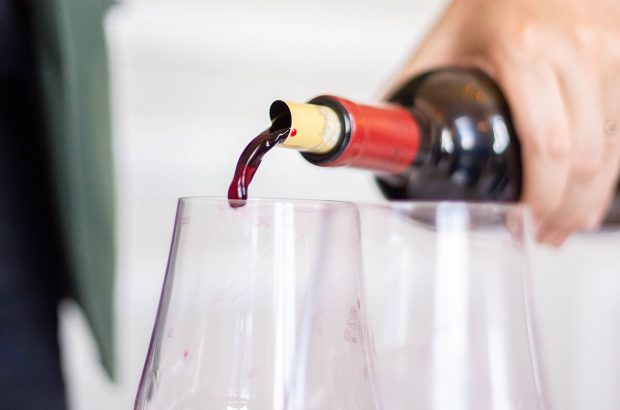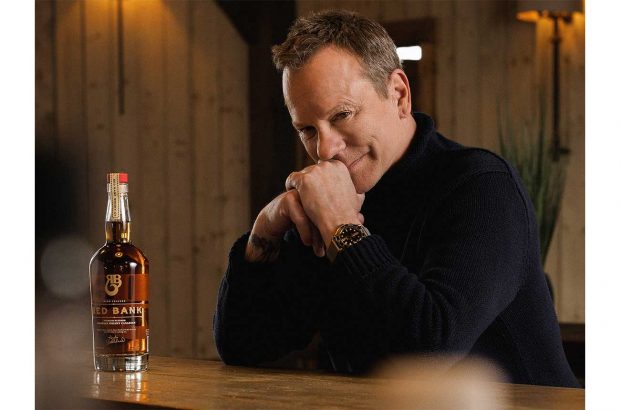Andrew Jefford delves back three decades to find out if Châteauneuf du Pape both needs and merits age.
How much Châteauneuf du Pape do you have in your cellar? In the 1997 revision of his outstanding book on the Rhône (Wines of the Rhône Valley), Robert Parker said he drank “more Châteauneuf du Pape than any other type of wine,” and that “visitors to my private cellar can attest to the fact that my stock of Châteauneuf du Pape is proportional to my voracious taste for the appellation’s finest wines.” Two paragraphs later, though, he lamented the fact that a Wine Spectator profile of eight ‘great American cellars’ (in August 1996) seemed to suggest that – in contrast to his own horde — the multi-million dollar collections in question excluded Châteauneuf more or less completely.
My suspicion is that the last twenty years haven’t seen a huge change. Châteauneuf as a fine wine to be cellared, in other words, remains the preserve of the committed enthusiast rather than a default choice for every fine-wine lover. The market prices for mature, high-point Châteauneuf – respectable but rarely headline-grabbing – underline the point.
Why? It’s possible that the style of the wines – extravagant, uninhibited and baroque – lacks the universal appeal of graceful, fresh Burgundy or urbane, elegant Bordeaux. Set alongside Californian and Southern Hemisphere blockbusters, though, Châteauneuf itself can seem almost burgundian, and a model of perfumed restraint. Style alone cannot account for this collecting neglect.
The nub of the matter, surely, is the ageability of the wine itself, and with it two key questions. Does fine red Châteauneuf need age? Can it improve with age?
In search of answers, I decided to taste the ‘tradition’ (or ‘grand vin’) cuvée of four leading Châteauneuf estates in three outstanding vintages, each a decade apart (2010, 2000 and 1990). The wines were supplied by the estates themselves – Ch de Beaucastel, Ch la Nerthe, Domaine du Pégau and Domaine du Vieux Télégraphe – and I had a chance to chat to César Perrin of Beaucastel, newly appointed MD Ralph Garcin of La Nerthe and Laurence Féraud of Pégau over lunch afterwards.
César Perrin pointed out that, like it or not, most consumers of Châteauneuf (not just the 60 per cent which is sold generically, but even from leading estates like Beaucastel) are drinking the wine more or less as soon as they buy it. “In 2012, we did a study about our 2010, which is certainly a vintage to age. We found that 80 per cent of it had been drunk already.” “People regard ageability,” added Ralph Garcin, “like a kind of life insurance policy – it’s there but they’d rather not use it. The challenge for the winemaker is to make a wine which can perform in a sprint, but also run the marathon if required.”
All three producers stressed that the region hadn’t yet had as much experience in creating wines for ageing as some others. “The locomotive for this is Bordeaux,” said Laurence Féraud, “where the ideal was always to have a wine which could age for 50 years. But as recently as 1986, all Pégau was sold in bulk.” Another challenge, according to César Perrin, was to understand exactly which winemaking parameters might create wines with maximum ageability – given the extraordinary latitude open to Châteanuneuf growers. There are 13 grape varieties (Beaucastel uses them all) yet you can still make wine from a single variety if you want; there’s a wide range of soil types; there’s total liberty regarding ageing; and there are many differences in winemaking approaches (Pégau uses only whole bunches including stems, whereas Beaucastel and La Nerthe destem everything and Vieux Télégraphe partly destems; Beaucastel briefly flash-heats the red harvest).
Ageability matters to the producers, though. “It’s the only way we have,” said César Perrin, “of knowing the work of our elders.” Laurence Féraud goes further, believing that it is via the trajectory of wine in time that you can see that “wine has a soul. It’s not just the result of a set of techniques. That’s why it is so important to me. I thought the 1990 had died two or three years ago, but a year later it took off again. Even we growers don’t understand everything.”
Chateauneuf’s Ageing Conundrum: Conclusions and Notes
One of the appeals of Châteauneuf as a fine red wine is its panoramic drinking window: you can broach this unforbidding wine after a year or two, yet serious examples still have the density to see out at least two decades. What this tasting emphasised, though, is that the wines don’t stand still during this time. They change, and do so rapidly.
At six years, the wines have acquired harmony but have not yet begun to lose detail, allusiveness and energy; this, in the end, is my preferred moment to drink them, and I’d go so far as to say that I cannot envision any Châteauneuf imperatively needing more cellar time than this.
Whether or not the wines reward if aged beyond the 10-year-mark, depends on the quality of the vintage itself. The 2000 vintage, for example, is looking good but not outstanding at 16 years; all the aromatic and flavour elements inside the wines have achieved harmony and full expression; freshness and energy are now ebbing, though for the time being mature charm compensates. I would only age this vintage further if you like the autumnal softness and sweetness of mature Châteauneuf.
The evidence from these four domains, though, suggests that the 1990 vintage was an unusually fine one. The expressive nature of the wines – the cast of their flavours – is, at 26, fully mature and fully evolved, but there is still a lingering energy in their constitution, and a tenacity in their tannins, which continues to compel. They’ve merited keeping, even if they never insisted on it.
2010 quartet
Ch de Beaucastel 2010
The most deeply coloured of the 2010s, the scents of this wine are close, intimate, engaging (allusions mingle black cherry with meat, sizzling and spitting on a fire of vine prunings). This is the most acidic, the freshest and the purest of the four 2010s on the palate, with a bustling dance of different notes (the black fruits have a bitter chase to them, but there’s also lemon, almond and liquorice tussling in there too). Not particularly tannic but supremely energetic. 95
Ch la Nerthe 2010
Soft, warm and gently expressive aromas, hinting at sweet milk, chocolate and tobacco, leads you to think that this will be a classically graceful la Nerthe. One sip, though, and you realise it is, after all, a 2010: the palate is much fresher and zestier than the aromas suggested. There are dried herbal and grilled meat flavours, with floral backnotes: lively, pure and thrusting, and not at all creamy. An elemental Nerthe. 93
Domaine du Pégau, Cuvée Réservée 2010
This is a concentrated and generous wine but (assuming the bottle we tried was representative) I found a marked Band-Aid/phenol character suggesting a disproportionate brett component. Laurence Féraud describes it as “very animal”. I have not scored it for this reason but readers should note that it is greatly liked by other critics (see its Wine-Searcher entry), with four scores of 97 or 98/100 and one score of 18/20 NS.
Domaine du Vieux Télégraphe, “La Crau” 2010
The lightest in colour of the 2010 quartet, and a wine of outstanding aromatic complexity (bramble, strawberry, thyme, orange blossom, lavender and honey emerge with time in the glass). On the palate, it is the stoniest wine of the four, with the finest quality tannins: gathered, shapely, savoury, textured and long. A Châteauneuf which succeeds in being both commanding and refined, and a great Vieux Télégraphe. 96
2000 quartet
Ch de Beaucastel 2000
Once again the darkest of its peers, with a very attractive, generous aromatic profile which reminded me of fresh fur and blood-rare beef perfumed by a little menthol (this vintage of Beaucastel was unusually high in Mouvèdre, at 30%). On the palate, this is the wine of the quartet which has kept primary fruit notes in the wine for longest, to the extent that it might almost be said to remain juicy: complete, poised, concentrated. 93
Ch la Nerthe 2000
Clear and translucent strawberry-red in colour. A dryer scent than the 2010, though with the diagnostic La Nerthe grace and charm: the cherry is fading, and straw, liquorice root and cigar leaf are beginning to take the lead. On the palate, this is texturally soft and expressive; the quiet fruit has a jam-pot sweetness to it, yet this is balanced by what I suspect is increasingly dominant acidity. If this was in my cellar, I would drink it now and over the next year or two. 91
Domaine du Pégau, Cuvée Réservée 2000
Clear and translucent now, with very mellow, harmonious aromas: earth, menthol, coffee, pine and lavender. On the palate, it is a long, full, vivid, amply constructed wine with palpable tannins, with acidity which remains fruit-saturated, and with complex spice-and-incense notes to finish. A fine effort which merits further ageing for those who love the mature style. 93
Domaine du Vieux Télégraphe, “La Crau” 2000
Slightly deeper in hue than La Nerthe, but the same depth of colour as Pégau. This wine has, remarkably enough, retained wild flower and lavender notes with a falling honeyed sweetness, too. On the palate, it has better volume and force than La Nerthe, with lower acidity and richer tannins. This is a very complete wine at present, with notes of thyme and meaty umami framing the refined, stony fruits. 95
1990 quartet
Ch de Beaucastel 1990
A clear red now, like its peers. There are raisins and earth, here, but it is the menthol note (a Beaucastel hallmark with time) which dominates. Although harmonious and seamless, there is still fine volume and energy to this aromatic profile, and no sign of any drying or decline. On the palate, the wine is lively, powerful, deep and masterful, with typically bright Beaucastel acidity, darkly alluring burnt-raisin fruit, impressively lingering tannins and some herb-and-spice complexities to finish. 95
Ch la Nerthe 1990
The wine is clear red, now, and looks fully aged. The pure, graceful, serene and unforced aromas evoke dust, old furniture and antique vellum book-bindings; on the palate the wine is smooth and settled with notes of cooked fruit, chocolate and wild mushrooms, and with soft coating tannins and a cigar-leaf refinement. La Nerthe 2000 is a gorgeous, fully mature, silver-haired bottle of wine which might linger on for a few more years, though I find it hard to see how it could improve further. 94
Domaine du Pégau, Cuvée Réservée 1990
This 26-year-old has a clear, blood-red hue and a fully mature though wonderfully aromatic character: graceful, accessible and well-ordered. Allusions you might find include pine honey, wild mushrooms, dusty leaves at the end of summer and cured meats hanging over an open fireplace. A magnificent palate, too, though again at full maturity for me: plum, prune and raisin notes, all somehow singed by time into a dark, bitter-edged fruitcake-and-tobacco intensity. The supporting tannins are still superb, but the quality of the fruit and the nature of the allusions suggest full maturity now. 95
Domaine du Vieux Télégraphe, “La Crau” 1990
A deep, clear brick-garnet in colour. Harmonious, serene aromas suggesting thyme, lavender, pine, tangerine and grilled meats, all smudged together into an enticing pastel wash. Still, too, a wealthy wine on the palate, the ample, plump, structuring tannins and ripe, stately, expressive flavours. No fruit left now, but lots of mushroom, cigar leaf, meat juices – and that lingering stony warmth which is a hallmark of Vieux Télégraphe. 96
More Andrew Jefford columns:

My favourite Mas de Daumas Gassac wines – Andrew Jefford
Our guide to Languedoc's star estate...

Jefford on Monday: The carbonic maceration virtuoso

Jefford on Monday: The yachtsman’s white
Will Vermentino ever be considered a world great?

Jefford on Monday: Dr Mistral





